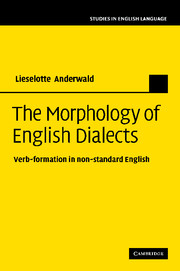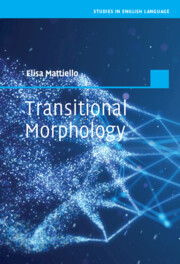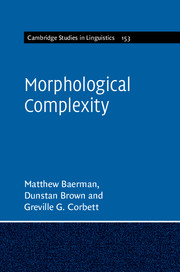The Morphology of English Dialects
Where do dialects differ from Standard English, and why are they so remarkably resilient? This study argues that commonly used verbs that deviate from Standard English for the most part have a long pedigree. Analysing the language use of over 120 dialect speakers, Lieselotte Anderwald demonstrates that not only are speakers justified historically in using these verbs, systematically these non-standard forms actually make more sense. By constituting a simpler system, they are generally more economical than their Standard English counterparts. Drawing on data collected from the Freiburg English Dialect Corpus (FRED), this innovative and engaging study will be of great interest to students and researchers of English language and linguistics, morphology and syntax.
- Informative and clearly written
- The only book that adopts a corpus-based approach using regional evidence
- Presents useful evaluations of the latest morphological theories
Product details
October 2012Paperback
9781107407695
240 pages
229 × 152 × 13 mm
0.33kg
Available
Table of Contents
- 1. Introduction
- 2. Past tense theories
- 3. Naturalness and the English past tense system
- 4. Sellt and knowed: non-standard weak verbs
- 5. Drunk, seen, done and eat:
- 2-part instead of 3-part paradigms
- 6. Come and run: non-standard strong verbs with a 1-part paradigm
- 7. Conclusion: supralocalization and morphological theories.




